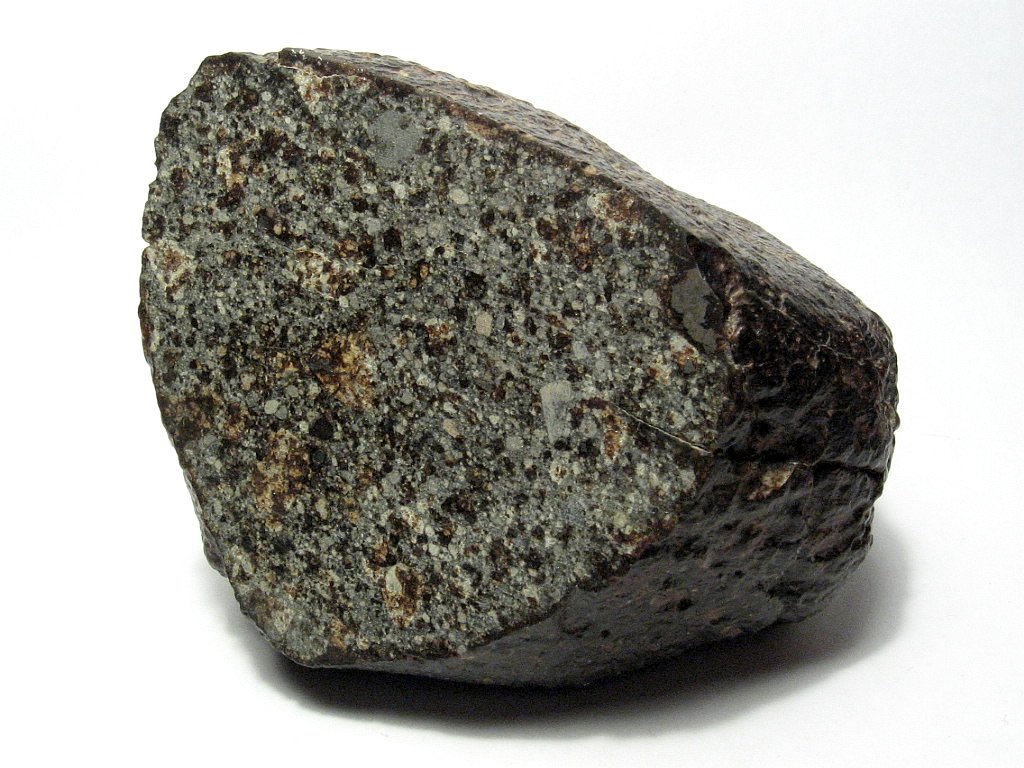The origins of life on earth are a hotly debated topic among scientists. One theory suggests that, even if whole organisms didn't come to earth carried by meteorites, then maybe meteorites brought some of the chemical building blocks for amino acids - the molecules that make up proteins. Now tests on a meteorite with the catchy name CR2 Grave Nunataks 95229 provide more evidence that meteorites might have brought these building blocks to earth, kickstarting the chain of events that led to the evolution of life here.
CR2 Grave Nunataks 95229 is a type of meteorite called a carbonaceous chondrite - meteorites that contain a range of organic chemicals including amino acids. Because of this, some scientists think that they might have 'seeded' earth with these chemicals when they fell from space, providing the primitive building blocks for the formation of DNA and proteins, which ultimately led to life as we know it. But studies of similar meteorites haven't come up with solid evidence for this, as the chemicals they contain are a real mix of all kinds of things - most of which couldn't easily be used to create molecules of life.
 The Grave meteorite spun off from an asteroid and landed in Antartctica in 1995. Researchers, led by Sandra Pizzarello and her colleagues in the US, analysed the chemical makeup of the meteorite using high pressure water at a temperature of 300 degrees centigrade - conditions designed to mimic both the asteroid where the meteorite was made, and the conditions on the early earth.
The Grave meteorite spun off from an asteroid and landed in Antartctica in 1995. Researchers, led by Sandra Pizzarello and her colleagues in the US, analysed the chemical makeup of the meteorite using high pressure water at a temperature of 300 degrees centigrade - conditions designed to mimic both the asteroid where the meteorite was made, and the conditions on the early earth.
Publishing their results in the journal PNAS this week, the team discovered that their asteroid contained surprisingly high amounts of ammonia - a chemical precursor to amino acids. These levels were much higher than might be expected on earth at the time.
Given the chemical makeup of similar meteorites, and the fact that most of these only contain compounds built of rings of carbon atoms, this is an unusual find indeed, and the first of its kind. Further analysis showed that the ammonia in the meteorite could only have come from the original asteroid it came from, and suggests that there was a lot of ammonia around in that environment.
Nitrogen, which is a key part of ammonia, is the fourth most common reactive element in the universe. Here on earth, it's a vital component of proteins, as well as DNA and RNA - the genetic information within living cells - and it's indispensible for life. Ammonia plays a key role in many chemical reactions, including the reactions that create the molecules of life.
But from what we know of the conditions on the early earth, it's been hard for scientists to figure out how this might have worked back then. For a start, evidence suggests that the early earth's atmosphere wasn't relatively rich in ammonia. And we know that sunlight can also break down the chemical, which would have been a big problem at the time.
But the discovery that meteorites can actually contain relatively large amounts of ammonia suggests an alternative route for the chemical to turn up and get involved in the chemical reactions that might have led to the generation of the molecular building blocks of life all those millions of years ago. And it adds weight to the idea that at least some of the molecules that kickstarted life on earth may have come from space.
- Previous Reefs at Risk Revisited
- Next Stem cell mutants










Comments
Add a comment